A guide to Queens' Filipinotown, from traditional cuisine to new takes on classics
July 22, 2023, 9:01 a.m.
Kimberly Camara, owner of the popular bakery Kora, takes chef and writer Farideh Sadeghin on a tour of Filipino food in Woodside, Queens, where they ate sisig , kare-kare, ube-flavored cake, halo-halo and more.

Farideh Sadeghin is a chef and video host based in Brooklyn. As part of a new series, she is exploring New York City neighborhoods through their food and histories.
I don’t eat Filipino food very often, but I regularly crave the vinegary tang of Filipino dishes like adobo or the citrusy brightness and spice of sisig.
So a few weeks ago, I rode my bike from Bushwick to Phil-Am Food Mart on 70th Street and Roosevelt Avenue in Woodside, Queens to meet Kimberly Camara, owner of the popular bakery Kora, for a Filipino food tour of the neighborhood. On that day, I was out to have introduce me to new versions of the classics I am familiar with as well as dishes I’ve never tried.

There are many concentrations of Filipinos throughout the New York metropolitan area, but Woodside, known as “Filipinotown,” has an intersection named “Little Manila Avenue.” New York has the country's third largest population of Filipino Americans, according to the Asian American Federation. And New York's Filipino community is the city's fourth largest Asian ethnic group.
During its colonization of the Philippines from 1898 to 1946, the U.S. set up nursing schools that taught the U.S. curriculum. After the Asian Immigration Act of 1965, many Filipinos arrived in the U.S. as students, doctors, nurses and engineers, as well as military personnel and domestic care workers, according to the Filipino American National Historical Society. Since the 1960s, over 150,000 Filipino nurses have immigrated to the U.S., according to Catherine Ceniza Choy, professor of ethnic studies at the University of California, Berkeley.

Camara grew up in Bayside, Queens with her parents, grandmother, and her older brother. Her mom, like many Filipinos living in the U.S., was a nurse, and her dad worked in IT. Camara was primarily raised by her grandmother, Corazon, which also meant eating her cooking – traditional dishes like adobo, sinigang and arroz caldo – and her family would often venture to Jamaica, Queens (home to another large community of Filipinos) and Woodside, to grab ingredients from places like Phil-Am Food Mart.
Camara’s business, Kora, is a combination of her name and her grandmother’s, a tribute to the woman who she watched cook daily and inspired her own cooking.
Camara moved to Woodside in 2018 and was a chef for about 10 years before getting laid off in March 2020 at the start of the pandemic. By June of that year, she had started making doughnuts from her apartment by frying brioche dough and adding Filipino flavors. Ube custard, leche flan, coco pandan and halo-halo were the first batch of flavors that she sold. Her boyfriend, Kevin, drove around delivering the treats throughout Queens and Brooklyn.
A mixture of sweet, salty and sour, the flavors of the Philippines are bright and tangy, and doughnuts were the perfect vessel for Camara to use to introduce them to New Yorkers. Filipino food is one of the original fusion cuisines; the Philippines is a nation of 7,107 islands, 22 regions and over 170 dialects.
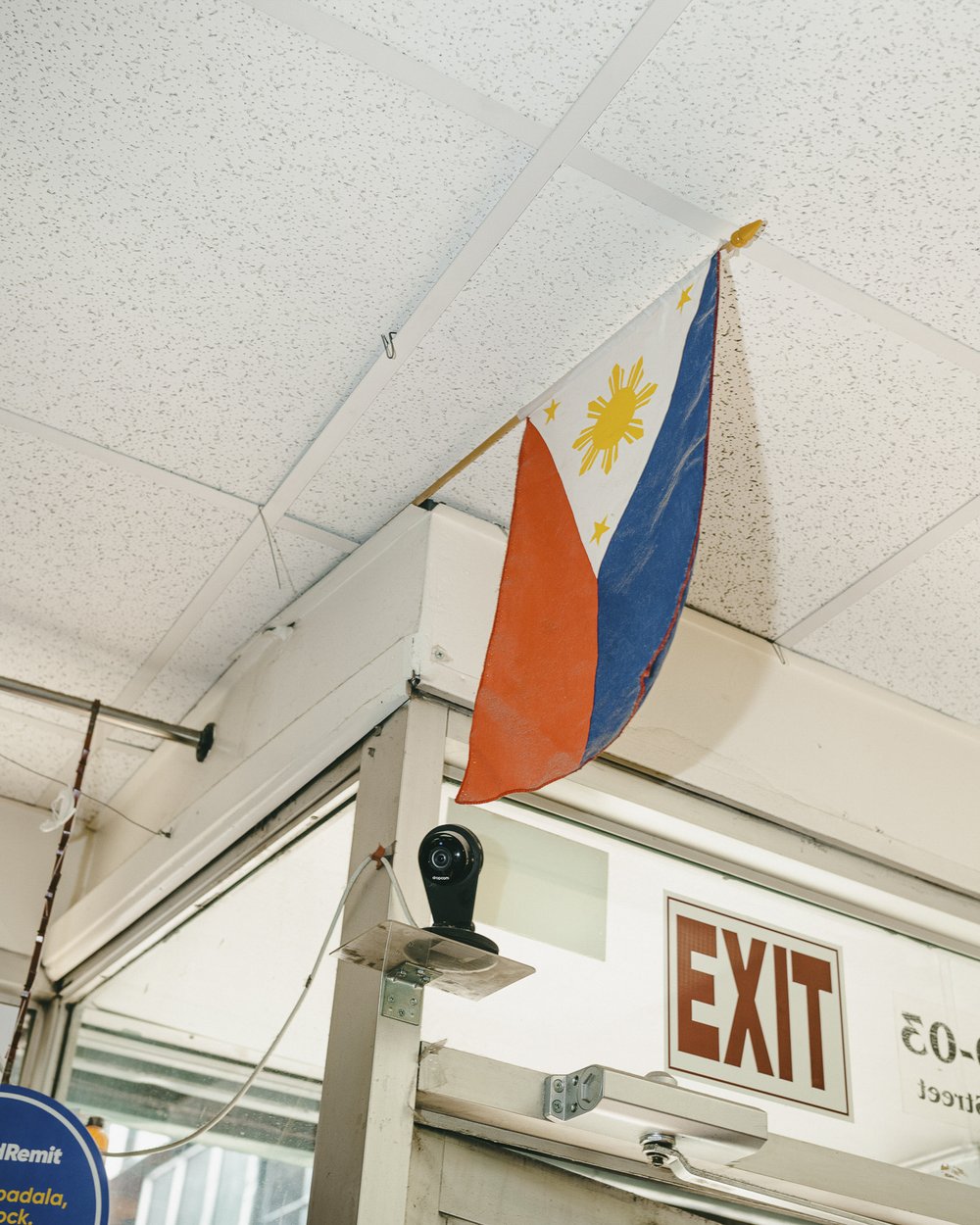
Where we visited
Inside Phil-Am Food Mart, we wandered the aisles, with me staring at all of the calamansi juice, ube-flavored things, and mixed fruits and jellies (for halo-halo, more to come on that) and Camara searching (without luck) for her favorite corn snack. We settled on some garlic-flavored fried corn (very similar to corn nuts), as well as Sky Flakes cracker sandwiches (the sweet butter flavor, of which I am snacking on as I type) to start our day.
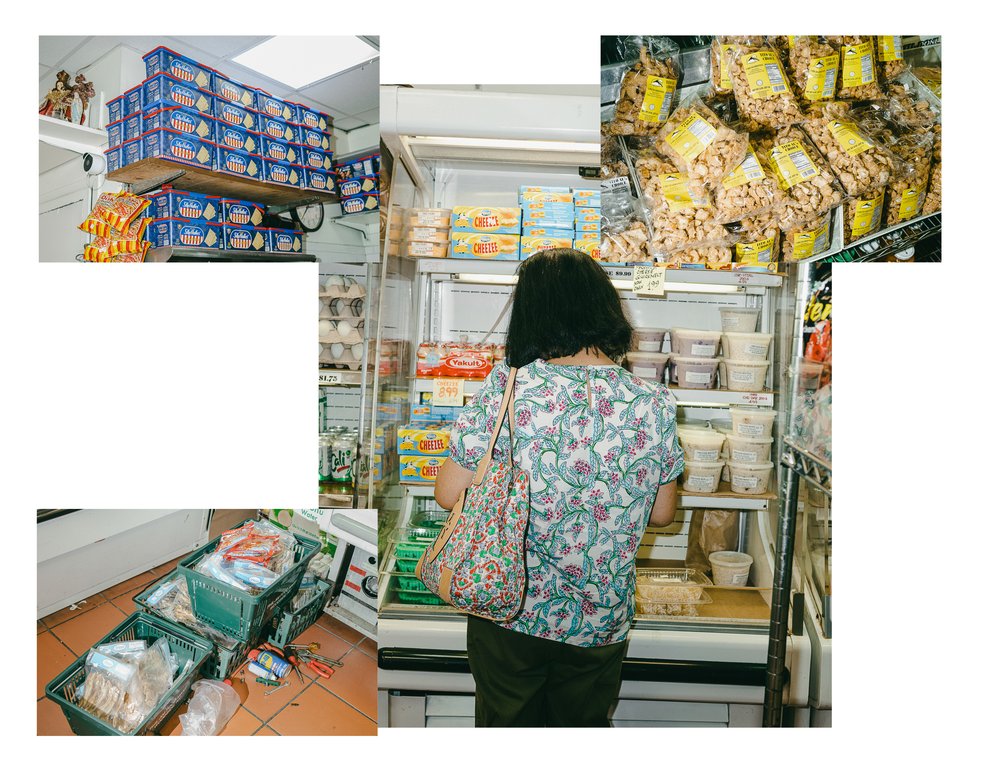
From there, we wandered across the street and climbed the stairs to Ihawan, which prides itself on being “home of the best BBQ in town.” Ihawan was established in 1997, and its means “grilling place” in Filipino, so obviously we ordered the chicken and pork barbecue, plus the inihaw na liempo (marinated and grilled pork belly) with garlic-fried rice. It all came with atchara (unripe papaya, carrot, and pepper pickles) and suka (a mixture of vinegar, sugar, garlic, chilies, and black pepper), both of which traditionally come alongside grilled meats. The tang of both helped offset the fattiness of the meats, and everything was so delicious and tender, sweet and sticky that I think I honestly could have ended the day there and been quite content.
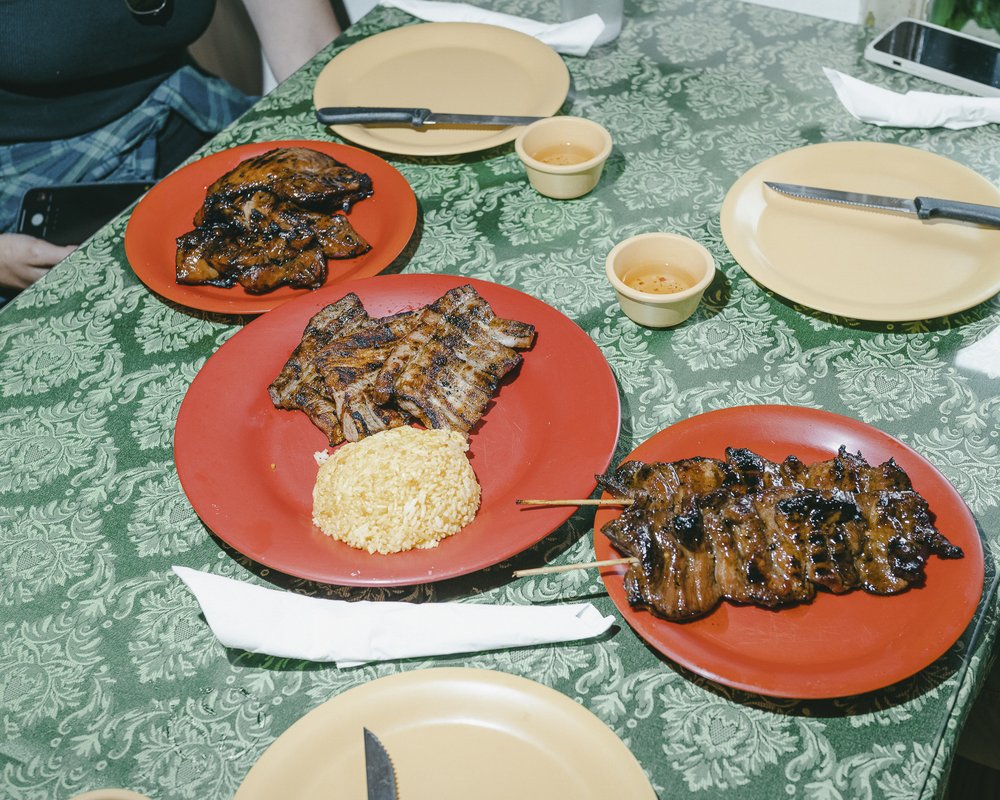
I also really would have loved to have had Ihawan's kamayan feast, however, we had many more stops on our list for the day, so couldn’t overdo it at our first meal. Kamayan means “by hand” in Tagalog (one of the main Filipino languages), and a kamayan feast is a traditional way of eating in which the food is laid out and served on banana leaves and eaten without utensils. We ate what we could and moved on to our next stop: Kusina Pinoy Bistro.
According to Camara, Kusina Pinoy Bistro has a bit of a more modern approach to Filipino food. We ordered the kare-kare (a thick, savory stew with a peanut butter base) and the Bicol Express (another stew made from coconut milk, chilies, ginger, garlic, shrimp paste, and pork). When Camara typically makes her kare-kare, she adds the shrimp paste right in. However, Kusina serves it on the side, so you can add it to your liking, which I was really into — it was the perfect way to amp up the flavor. Bicol Express (the dish) is named for the railway train of the same name that ran from Tutuban, Manila to Legazpi, Albay, right in the heart of the Bicol region.
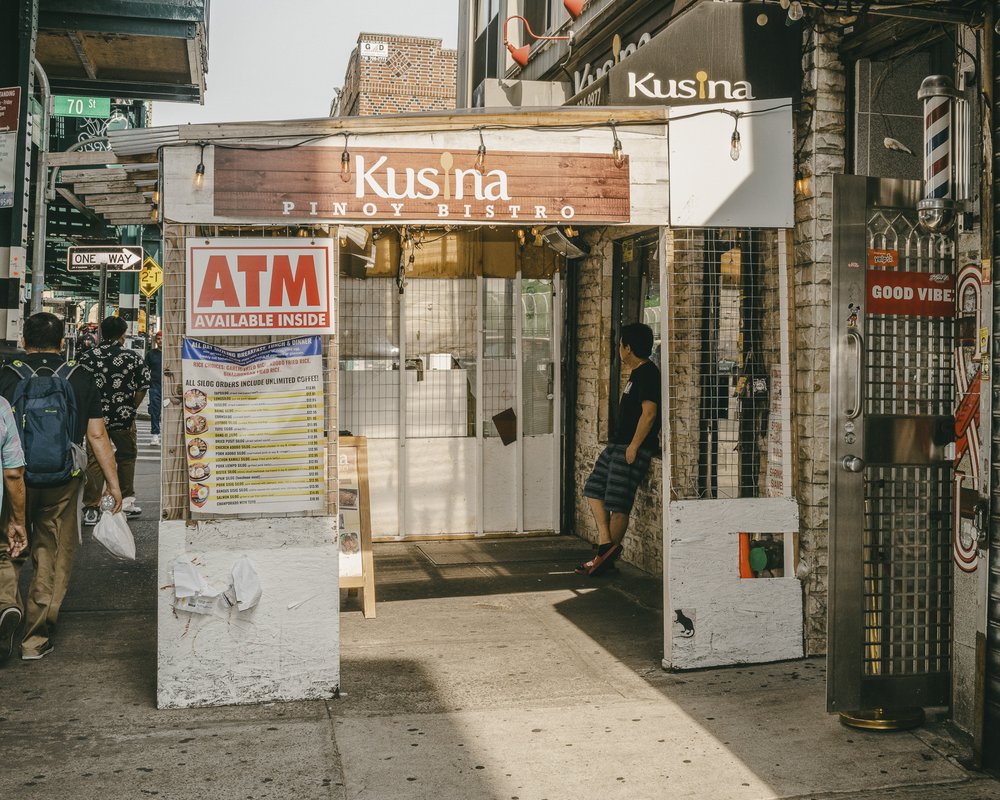

As we walked a bit further down Roosevelt Avenue to our next destination, Red Ribbon Bakeshop, Camara pointed out the Balikbayan box services. Filipinos living in the U.S. can send boxes to their families still living overseas in the Philippines. These boxes are filled with any number of things: toothpaste, clothing, or food, all shipped tax-free at a fixed rate. In Tagalog “balikbayan” means “returning to one’s country.” For many Filipinos, sending a balikbayan box is a way to return to the Philippines in spirit.
We arrived at Red Ribbon, which is owned by Filipino fast-food chain Jollibee, which we’d also be swinging by later in the afternoon. Red Ribbon is a Filipino bakery chain that originally started in the Philippines in 1979 as a hobby for Amalia and Renato Mercado and their family. It then turned into a business, which now boasts over 500 stores worldwide, 30 of which are in the U.S. We got a couple of slices of cake (the ube and mango supreme) and a chicken empanada. The empanada was slightly sweet, which was good, just not what one might expect in an empanada. The cakes? Unreal. We ate them on the rooftop at Camara’s apartment while the sun set later that night and HOLY CRAP WERE THEY DELICIOUS. These cakes were moist, fruity, and truly among the best I have ever had.

We then popped over to K-Glen Deli and Sari-Sari Store. The owners, Glen and Nenita Alagasi, took over the spot in 2015. The shop has many convenience items and snacks including the corn snack Camarawas looking for! It was Golden Sweet Corn, a sweet corn puff, which reminded me of cheese balls, but tasted just like corn. The store also sells Red Horse, an 8% ABV Filipino beer that “kicks like a horse” after a few, according to Glen and Nenita.
Dollar Hits on 39th Avenue and 64th Street was our next stop. This LA street food hot spot opened its first location on the East Coast here in 2019 with over 20 skewers to choose from. We got the isaw (fried pork intestines) and the kwek-kwek (deep-fried quail eggs), as well as the sago’t gulaman (a grass jelly drink made of brown sugar, tapioca pearls, water and vanilla that Camara describes as flat cola — I found it very sweet and refreshing!).

Our second to last stop was next door at Kalye Bistro. Here, we got the palabok overload (rice noodles with shrimp sauce, crushed pork rinds, lumpia, and hard boiled eggs) and the crispy pata (deep-fried pork knuckles), the latter of which is a favorite of Camara that she will typically get for herself and not share (truly my kind of eating). We also got the bangus sisig. Sisig is typically made with chopped pork and seasoned with calamansi, chilies and onions, served on a sizzling platter. It’s a popular Filipino dish, and this version uses milkfish.
And finally, we wandered around the corner to Purple Dough, where we had the ube leche flan and halo-halo. The flan reminded me of impossible flan, a cake I had made and eaten in Mexico where you bake a cake and flan in the same pan. You make a caramel, then pour in cake batter, then a flan mixture, and bake. Once it has cooled, you invert it to reveal that the two layers have separated, leaving the cake on the bottom while the flan rises to the top. Purple Dough’s flan was delicious, as was the halo-halo, which is a cold dessert composed of layers of shaved ice, evaporated milk or coconut milk, sweet kidney beans or chickpeas, ube jam, (and more!) then topped with a scoop of ube-flavored ice cream. It’s a fun dessert, both to look at and to eat.
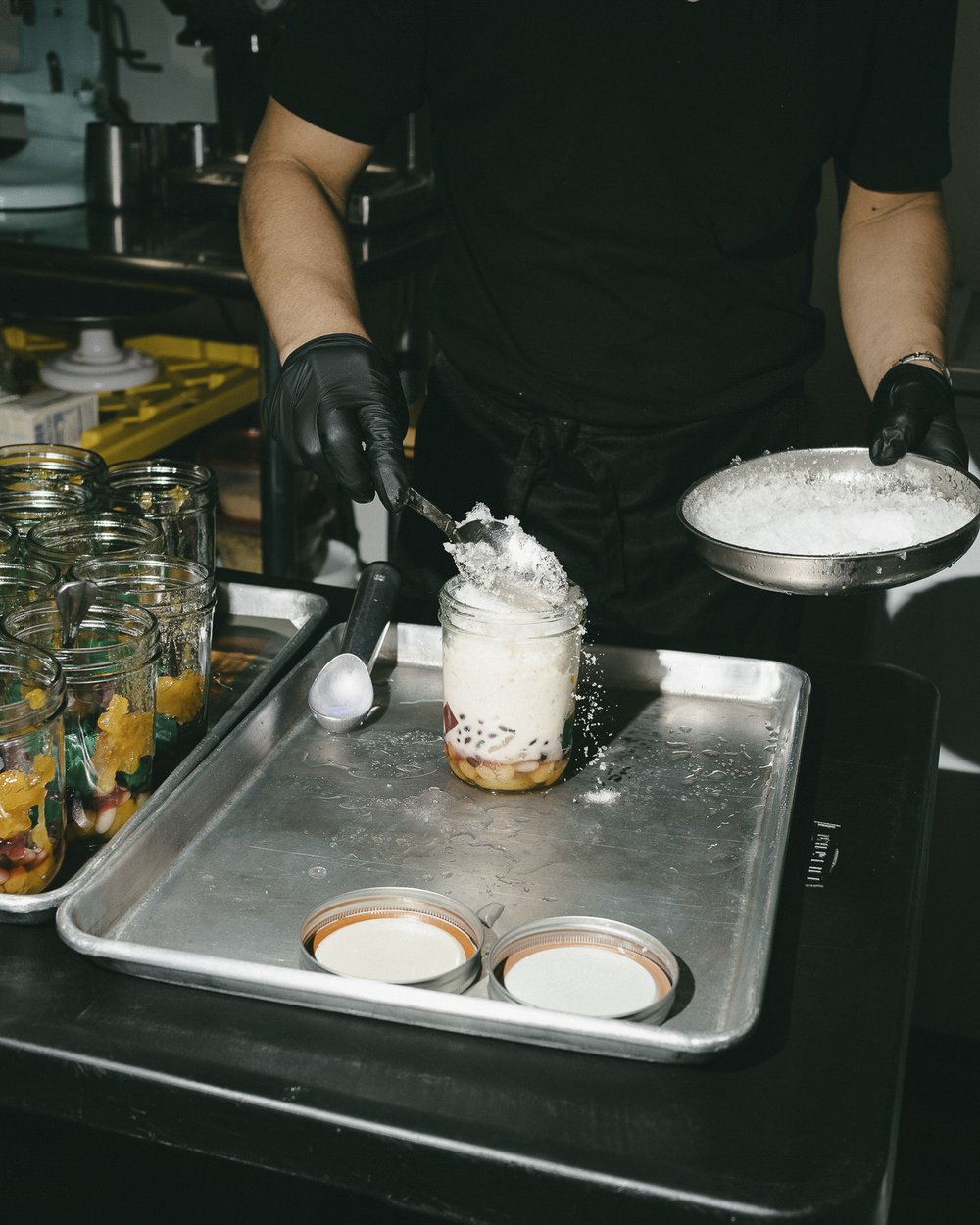
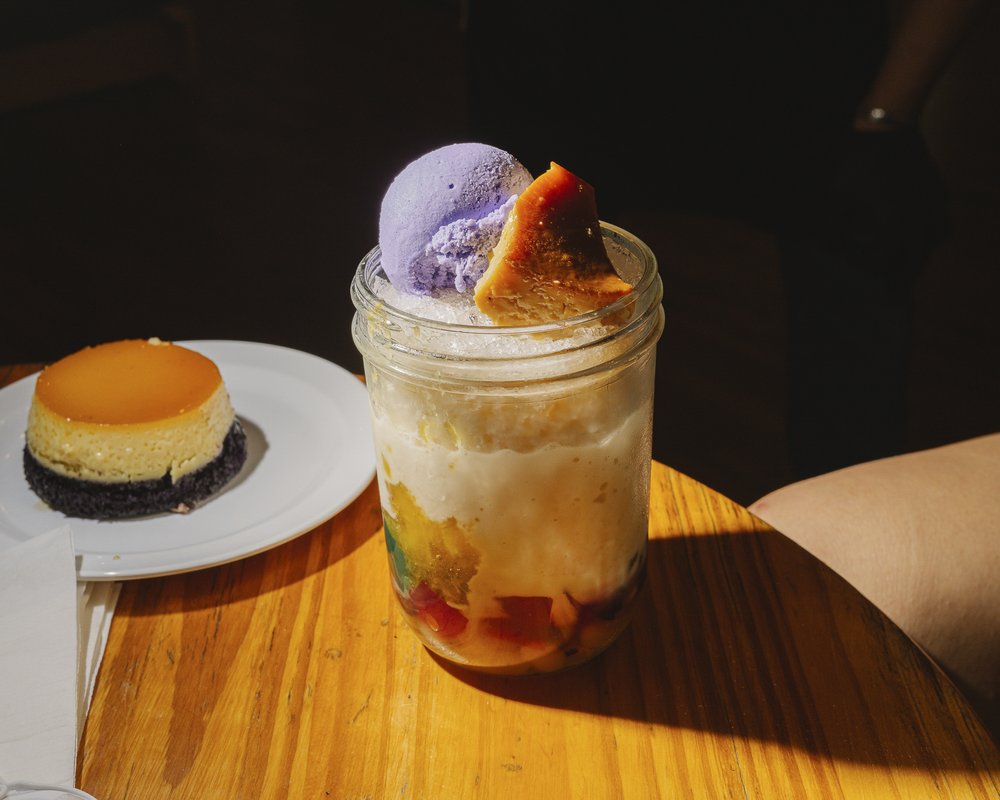
Obviously we wanted to check out both Renee’s Kitchenette and Grill (one of the oldest Filipino spots in the area, opened in 1992), but it was closed the day we went, and Jollibee, but this particular location was closed for renovation.
Jollibee is famous for its fried chicken (it was named the best fried chicken spot in America by Eater in 2022), as well as its peach mango pie (a kicked up rival of the McDonald’s apple pie) and sweet spaghetti. The famous chain began in 1978 and now has over 1,300 locations worldwide, with spots in both Manhattan and Queens, with a Brooklyn location opening soon. The slogan I saw on the window signs at Jollibee's Roosevelt Avenue location read: “Once you get it, you’ll get it,” and I hope I get it soon!
- heading
- Check it out for yourself
- image
- image
- None
- caption
- body
All the places mentioned in this article are in this Google Map, which you can save to your phone.